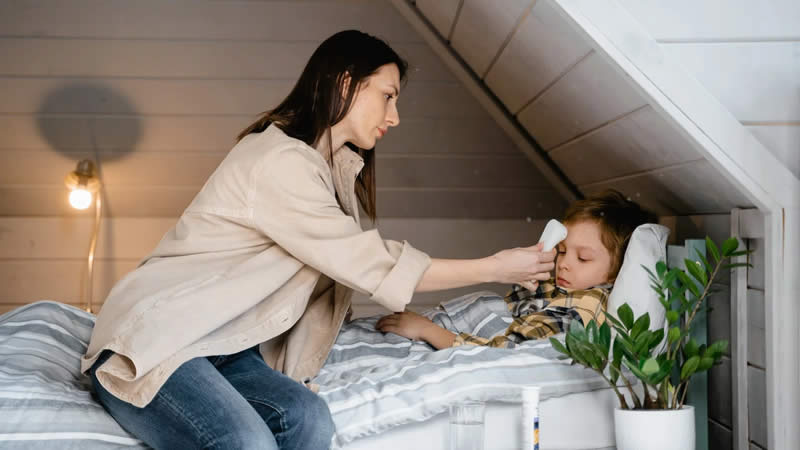As a parent, one of the things you worry about most is your child’s health. When your little one comes down with a fever, it can be scary. But don’t panic! In this blog post, we’ll talk about what causes fevers in children and when to seek emergency care. We’ll also give you some tips for treating your child at home. So read on and stay calm – we’ve got you covered.
Defining fever – what is it and how is it measured in children
Fever can be a worry for any parents, especially when it comes to their kids. But what exactly is fever and how should it be measured in children? Fever is when the body temperature goes above what’s normal — usually above 100 degrees Fahrenheit — and is an indicator of infection or other underlying illness.
To measure fever in children, you often use a digital thermometer to take an oral, rectal, or armpit reading. All three methods are considered accurate ways of measuring fevers in children but the rectal method is said to be the most reliable. If you’re ever unsure though, be sure to follow up with your child’s doctor just to make sure.
Causes of fever in children – common viral infections, teething, vaccinations
Watching our children come down with a fever can be the most frightening thing for parents. The good news is that most fevers are caused by common viral infections, teething, or vaccinations, any of which may cause a mild to moderate temperature rise in our little ones.

Viral infections often pass on their own and can be managed with rest and fluids as needed. Teething is also quite common and often causes pain, swelling, and discomfort in addition to temperature increases. Finally, some vaccines can create a brief fever before the body adjusts to the introduction of new bacteria or viruses. Whichever the cause of the fever, it’s important that parents keep themselves informed about the best way to manage it.
When to seek medical attention for a child with a fever – emergency signs and symptoms
Taking a child to the doctor can be a tough decision, especially if it involves a fever. A fever itself isn’t necessarily an emergency but there are other symptoms that can indicate medical attention is needed right away. In general, if your child’s temperature rises above 102°F or lasts for more than three days, or if you notice any of the following signs: severe abdominal pain; difficulty with breathing; inability to wake up or stay awake; confusion and lethargy; a rash that does not blanch when pressed; stiff neck accompanied by headache, fever and/or confusion; or lack of appetite and dehydration, then it’s time to seek medical help. Don’t hesitate to act quickly in these scenarios as it could save your child from further health complications down the road.
Treating fevers at home
Taking care of a fever at home can be as simple as monitoring your temperature and making sure you’re drinking enough fluids. For adults, it’s important to keep your body cool with a cool, damp cloth to lower your temperature. If the fever is over 102°F, you may need to take an over-the-counter medication like ibuprofen or acetaminophen.
Be sure to read the instructions carefully and adhere to the recommended dosage. Fevers in young children should be taken seriously and if temperatures reach 103°F or higher, parents should consult their pediatrician right away. For high fevers that last more than three days, seek medical advice regardless of age as this could be a sign of a more serious medical condition.
Prevention of fevers in children – good hygiene practices
Good hygiene practices can be difficult to keep up with for growing kids, but it’s worth the effort! Keeping a clean home and regular hand washing will go a long way in helping prevent fevers from developing in children. Adopting healthy activities like bathing at least once daily, properly washing dishes and utensils, cleaning floors regularly, and avoiding contaminated water sources will help minimize the risk of infection.
Moreover, teaching your children proper sneezing and coughing etiquette is important too since viruses spread quickly through respiratory droplets. Although it may require some extra work on your part, taking the time to make sure your kids maintain good hygiene practices is one of the simplest ways to safeguard against fever-causing germs.
In conclusion, fever is a common symptom experienced by many children and can occur for a variety of reasons. It is important to monitor the fever closely, being mindful of emergency warning signs. Mild fevers can typically be treated at home with rest, lots of fluids, and appropriate medications.
To help reduce the risk of developing a fever, it’s also crucial to practice good hygiene habits such as washing hands regularly and avoiding contact with sick people. By keeping these tips in mind you will be better equipped for when your little one gets their next “fever fix”. Until then, stay healthy!



